Austin Area Pests
-
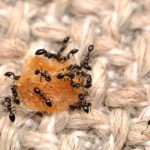
-
Black Ants (Monomorium Minimum)
Little black ants have a shiny black color and prefer to live outdoors in decaying wood, but will also build their nests in cracks in walls or cement. Outside, little black ants establish their nests under rocks or stones and in rotting logs, gardens and other open areas. Their nests can also be located within small craters of very fine soil. Indoors, little black ants build their nests in voids and cavities such as wall voids.
-

-
Carpenter Ants (Camponotus)
Carpenter Ants are a structural problem and will nest in any kind of wood inside your home. Wood studs, window and doorframes, sill plates, and roofs are all vulnerable to carpenter ant nesting and damage. Carpenter Ants come in multiple sizes and can be seen with or without wings (winged ants are a sign of a new colony).
-

-
Crazy Ant (Nylanderia Fulva)
Crazy ants get their name because of the quick, erratic movements. The colonies live under stones or piles; they have no centralized nests, beds, or mounds. They feed on small insects and vertebrates, and forage on plants, especially for sweet materials. The ants appear to prefer the warmth and moisture.
-

-
Fire Ants (Solenopsis Invicta)
Fire ants are identified with their reddish brown color. They make noticeable mounds in almost any type of soil, but prefer open sunny areas, such as lawns, parks, and fields, with no visible entrance holes on the mound itself. Characteristics of the fire ant are the aggressive swarming behavior and painful stings, generally due to nest disturbance. Fire ants almost always nest outdoors, although they will enter buildings in search of food and water, especially in late summer.
-

-
Cicada (Disambiguation)
Cicadas are large insects they are 1 to 1 ½ inches in length, it has prominent eyes set wide apart, short antenna and membranous wings.
They live in trees and feed on sap. Cicadas are best known for their loud calls in much of the eastern US. They’re more often heard than seen.
-

-
American Cockroach (Periplaneta Americana)
The American Cockroach are red and brown, with a yellowish figure 8 pattern on the back of their head. They are 1 ½ to 2 inches long. Both male and female have wings, but don’t usually fly.
American cockroaches are found throughout America. They normally dwell in shady, damp areas such as basements, garages, wood piles, and sewers. They sometimes venture into homes and restaurants looking for food, water, and shelter, especially in response to severe weather. Due to a sensitivity to light, they are mostly active at night.
-
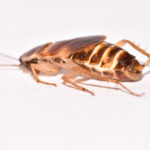
-
Brown Banded Cockroach (Supella Longipalpa)
The Brown Banded Cockroach are also small, about ½ inch long. They have two noticeable lighter stripes across their back. The adult females are shorter and wider than the males and their wings do not cover their whole back. Males have full wings and fly when bothered.
They like warm and dry areas, like behind/under refrigerators, on top of walls of cabinets, and inside pantries, closets, dressers, and furniture. They usually hide in any place away from water. The brown-banded cockroach feeds on the usual food sources like other cockroaches, but they are also known to chew on non-food materials like nylon, paper, skin flakes, etc.
-

-
German Cockroach (Blattella Germanica)
German cockroaches are light brown or tan and have two dark stripes by their head. Known to be one of the smallest cockroaches they are about ½ inch in length.
These roaches are the most common and difficult for homeowners to deal with. German Roaches enter the home via people, groceries, electronics, furniture, etc. A single roach egg can take up to 35 days to hatch and can hatch up to 40 offspring. German Roaches will infest areas of warmth and moisture. That is why activity usually starts in a kitchen or bathroom.
-
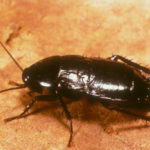
-
Oriental Cockroach (Blatta Orientealis)
The Oriental Cockroach are dark brown or almost black in color and are shiny. They are about 1 inch to 1 ¼ inches long. These Cockroaches have very small wings that barely cover their backs, so they cannot fly.
Oriental cockroaches live in areas with decaying organic matter (plants and animals) and places where it’s damp, cool and dark. Most of the time they are outdoors, beneath leaves, in mulch, and in garbage dumps. Places where they might be inside the home in floor drains, under sinks and washing machines, and in damp basements.
-
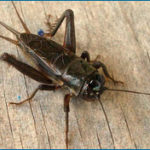
-
Field Crickets (Gryllus Pennsylvanicus)
Field crickets are normally ½ to 1 inch in size, depending on the species can be black, brown, or red in color.
Field crickets prefer to live outdoors; in the ground, tall grass, or built up piles of natural lawn debris. They will move indoors if weather conditions become unfavorable.
-

-
Earwigs (Order Dermaptera)
Earwigs are brown in color, and their whole body is about 2 inches long. With large pincers on the end of their tail.
They are most visible inside and outside of the home during the months or a season where there is higher than normal moisture (or rain) and hotter temperatures. They will typically hide in small gaps or crevices such as door or window frames, gutters, and water damaged wood.
-

-
Flea (Siphonaptera)
A tiny wingless jumping insect is flat from side-to-side. Fleas have very powerful back legs that help them jump onto humans and animals.
Fleas are bloodsuckers; they are common in homes and affect pets and humans. Fleas like to be in warm, moist conditions. They generally enter your home via your pets; although, adult fleas respond to movement, vibrations and exhaled breath. By simply walking across a flea infested area (your lawn, a public park, etc.) you can set off the natural jumping action of adult fleas. They then can easily hitchhike into your home, once they cling to your skin, clothing or belongings.
-
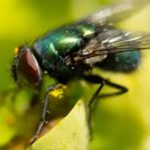
-
House Fly (Musca Domestica)
House flies grow to 8-12 millimeters long. Dark black to bluish insect has pale sides and light stripes down the back.
House flies are extremely common and are always found near humans or centers of human activity. Often they are found on poultry and hog farms and can cause public health problems in large quantities. They breed in feces and are active mostly during the day.
-

-
Gnats (Order Diptera)
Adult gnats are small long legged winged insects that fly.
Fungus gnats live off of live plants and feed on fungi that is growing in the soil. Inspect potted plants and correct moisture. Let landscapes dry before watering again.
-
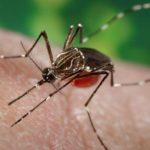
-
Aegypti Mosquito (Aedes Aegypti)
• Recognized by white markings on the legs and upper surface of the thorax
• Lay eggs anywhere it is damp such as wet soil or marshy areas
• Breed near stagnant water, such as flower vases, uncovered barrels, buckets, etc…
• Most commonly feed at dusk and dawn, indoors, in shady areas or when the weather is cloudy
• Identified as a transmitter of Zika Virus, and can spread yellow fever, dengue fever and chikungunya
-
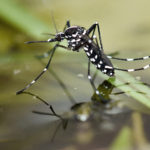
-
Asian Tiger Mosquitoes (Aedes Albopictus)
• Black and white color pattern with a white stripe running down the center of it’s head
• Known for it’s extremely aggressive behavior
• Unlike other species are active in the heat of the day
• Prefer moist vegetated area
• Feed on mammals, birds and humans
• Identified as a transmitter of the Dengue Fever
-
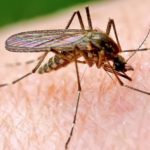
-
Culex Mosquito (Quinquefasciatus)
• Small dark mosquito measuring from 0.2 – 0.4 inches in length
• Prefer warm wet habitats
• Lays eggs on water’s surface
• Typically feeds on birds
• Seek blood meals at dawn and dusk
• Carriers of various diseases to include West Nile
-
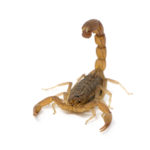
-
Bark Striped Scorpion (Centruroides Vittatus)
Like spiders and ticks, scorpions are arachnids. They have eight legs and are equipped with a set of lobster like pincers in the front and a long tail with a stinger at the tip.
Common in warm climates and spends most of the time on the ground and can be found under rocks and surface debris, within vegetation and in weathered rural structures like sheds and barns, and houses during the day.
-

-
Spiders (Arachnids)
There are several different types of spiders in the Greater Austin Area. Most species play a major role in controlling pest population. All spiders have two body parts, eight legs, and two leg like appendages in the front called pedipalps.
These insects mainly breed outdoors but enter your home for warmth, shelter, and moisture. Spiders are most visible inside and outside of the home during the early months or the season, on the exterior during mid-summer, then back inside once the temperature begins to cool down. When there is higher than normal moisture (or rain) and hotter temperatures, they will be seen more than during dry seasons.
-
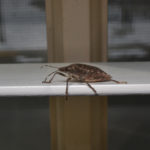
-
Stink Bug (Halyomorpha Halys)
Stink bugs triangular shape with a mottled grayish-brown color; they are ¾ inches long with 6 legs and antenna. Known for their odorous scent when disturbed or crushed.
They are a nuisance to homeowners, and tenants of apartments, townhouses, condominiums and office buildings because they are large, can occur in large numbers and fly; however, they cannot cause any significant structural or cosmetic damage to your home.
-

-
Sow Bug aka Roly Poly (Oniscidea)
They have gray bodies they can be up to 3/8-inch long. Sow bugs have kind of a tail on the back end and are able to roll up into a ball when they’re bothered. They are also known as “roly-polies”.
They breed mainly in the spring. They like damp dark areas, and are mainly found outdoors under stones, logs, and leafs.
-
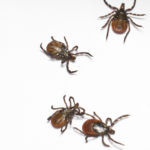
-
Ticks
Ticks are tear dropped shaped, they range from brownish black to grey depending on the species. Immature ticks have six legs, mature ticks have eight legs and they are relatively flat before feeding, some ticks become plump and round after feeding.
They are the most common during the warmer months. They move to areas where there are a lot of mammals, ground-dwelling birds, and lizards. Common places are: moist woodlands and areas around the edge of forests with a lot of plants, along forest trails, grassy areas, in and around campgrounds, and in abandoned grassy yards in urban areas.
-
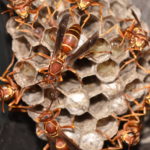
-
Paper Wasp (Polistes)
Paper wasps are ¾ to 1-inch-long, slender, narrow-waist wasps with smoky black wings that are folded lengthwise when at rest. Its color is brown with yellow markings on the head. Thorax and bands of the abdomen. Often confused for the yellow jacket and hornets which can be more aggressive but still attack when they or their nest is being disturbed.
Their nests are found in sheltered areas, such as eaves of a house, limbs of a tree, end of an open pipe, etc.…
-

-
Yellow Jacket Wasp (Vespula)
Yellow jackets are 0.5 inches long, are black and yellow with a banded abdomen. They have lance like stingers with small barbs, and typically sting repeatedly when provoked.
Often found nesting in the ground, but they can also inhabit railroad ties, wall voids and above ground locations.
-

-
Mud Dauber
Mud Dauber are generally resembling a long and slender wasp about 1 inch in length, they are variable in appearance depending on which family they belong to (Sphecidae or Crabronidae). Both families build their nest from mud.
Most are predators generally prey on small colorful spiders or jumping spiders. They are normally not aggressive but can be when threatened.

























